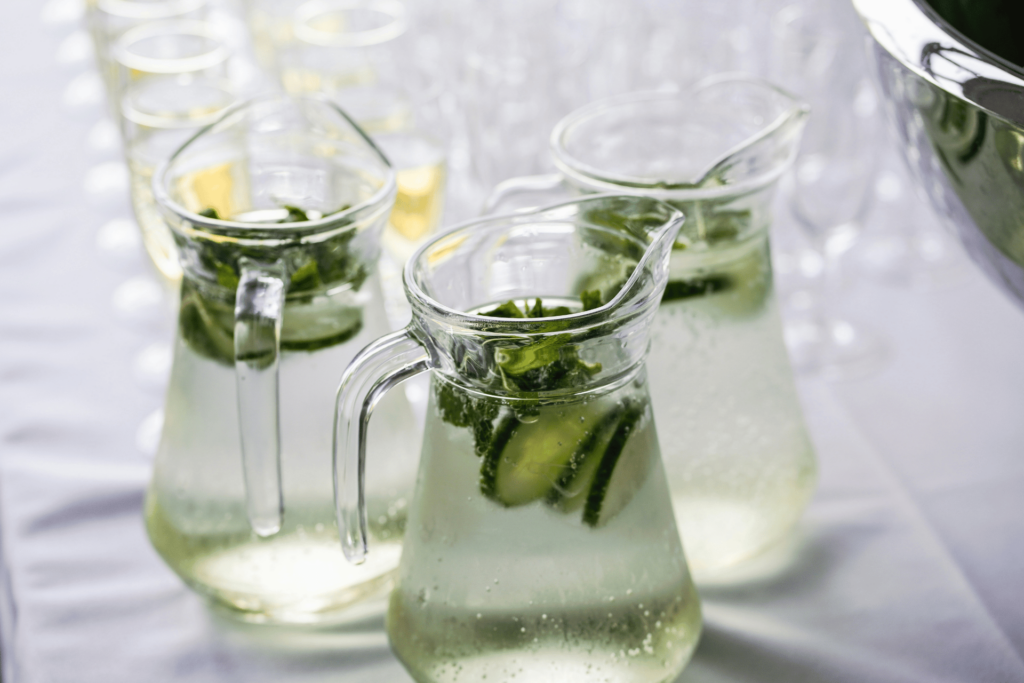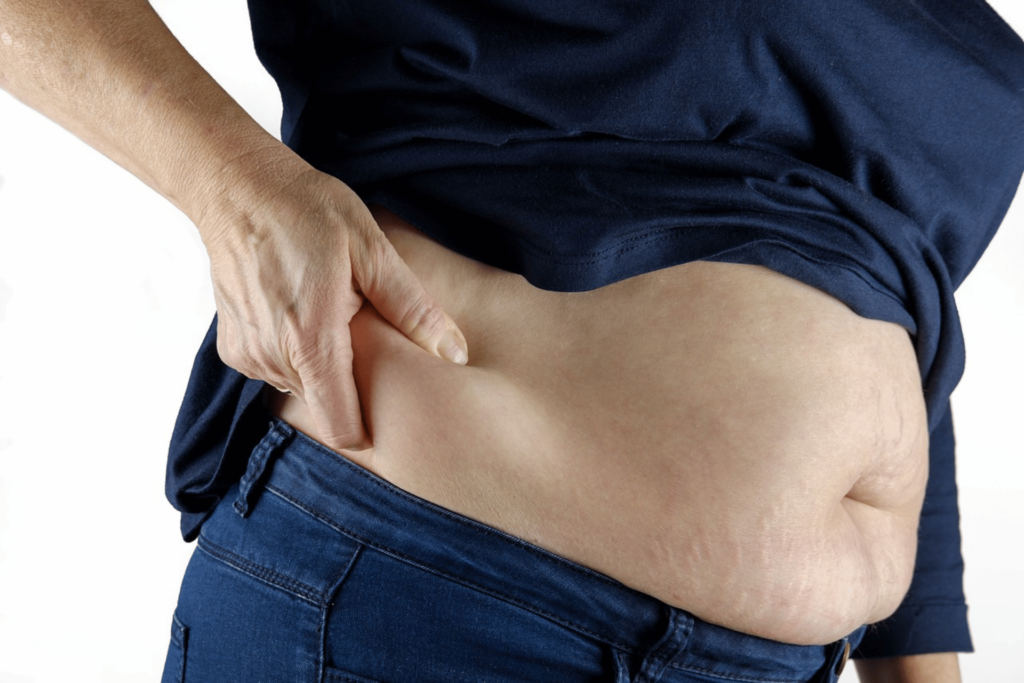 The truth about high fructose corn syrup, Splenda, Agave, and Truvia.
The truth about high fructose corn syrup, Splenda, Agave, and Truvia.
Sit down at any restaurant these days. To sweeten your tea (or coffee) you can choose from the white, blue, pink, yellow, or maybe even green “stuff.” While we know that white sugar has been associated with over 60 health ailments, what about the rest? Are they dangerous?
For starters, high fructose corn syrup is probably the most insidious of all sugar substitutes, as it alone accounts for more than 40% of caloric sweeteners added to foods and drinks in the US—with consumption growth matching the escalating rise in obesity. It doesn’t come in packets because it doesn’t have to. It’s already in a myriad of foods including sodas, juices, candies, pasta sauces, salad dressings, breakfast cereals, yogurt, ketchup, frozen foods, and even baby formulas.
High fructose corn syrup (HFCS) is such a concentrated sweetener that your brain doesn’t even recognize it as sugar. It overrides your body’s natural ability to feel full, so you eat more. In fact, new research has confirmed that high fructose corn syrup may be having a dangerous effect on the obesity epidemic. Read more in my blog article – New Proof: High Fructose Corn Syrup is Making You Fat.
Here’s a brief consumer alert about the sugar substitutes most commonly used by health minded individuals:
Sucralose (aka Splenda)
Discovered in 1976, it is made by chlorinating sugar! It was discovered by accident. Two Tate & Lyle scientists were looking for a way to test chlorinated sugars as chemical intermediates when there was a gross misunderstanding. Leslie Hough asked his young Indian colleague Shashikant Phadnis to test the powder. Phadnis thought Hough said “taste,” and he did—it was very sweet! A final sweetener formula was developed within a year.
In 1998 it was approved by the FDA. In 2000 concerns over safety surfaced, including a lack of long-term studies. Reported symptoms of sensitivity to this compound include headaches, dizziness/balance problems, mood swings, vomiting and nausea, abdominal pain and cramps, seizures and convulsions, and changes in vision. Concerns have also been raised regarding its potentially dangerous effect on the thymus gland—crucial to proper immune system functioning.
Agave Nectar
Although initially thought to be related to cacti, agave is not. The latest rage in health food stores, agave nectar—depending upon how extensive the heating and refining process—results in a high fructose syrup. It contains complex forms of fructose called fructosans. In order for it to obtain its sweetness the agave sap must be heated, breaking the fructosans into fructose units. This is then filtered, resulting in the final product that ranges in color and consistency. Despite having a low ranking on the glycemic index, its fructose content is usually higher than even high fructose corn syrup, and it can take a toll on your health—from blood sugar spikes and insulin resistance to extra fat storage.
Truvia
Comprised of rebiana, erythritol, and natural flavor, Truvia is the latest “hot” sweetener. Rebiana comes from the leaves of the stevia plant—a natural herb that ranks zero on the glycemic index and has been used for hundreds of years as a sweetener in South America. However, erythritol is a sugar alcohol that in excess is not tolerated well, resulting in digestive problems like bloating, constipation, and/or diarrhea. Another downside of erythritol is that it’s often made from corn, one of the top 5 allergens.
So, how do we get the sugar out?
• Spice up your life with coriander, nutmeg, ginger, cinnamon, and cardamon (my favorite). These are all delicious spices that can be a safe way to satisfy your sweet tooth without adding sugar.
• Get creative with vanilla, almond, mint, coconut, or lemon extracts. See how once boring foods are suddenly transformed into new taste sensations.
• Finish up your meal with Bengal Spice Herbal Tea that serves up a cinnamon, ginger, cardamom, and vanilla flavor.
A natural herb known for its “sweet leaves,” stevia has gained much popularity among the health conscious crowd since I first wrote about it in The Fat Flush Plan in 2002. As a I mentioned earlier, it scores a zero on the glycemic index, and its 30 times sweetener than white sugar. It’s also virtually calorie-free, does not feed yeast and does not trigger fat-conserving insulin production or raise blood sugar levles like other sweeteners. Studies have show that stevia may dilate blood vessels resulting in lower blood pressure and increased urine flow. A little bit goes a very, very long way when it comes to stevia and because of this some of my Fat Flushers find it too sweet. If you do decide to give stevia a shot, look for a brand like SweetLeaf that contains no added maltodextrin—an extremely high-glycemic substance.
In no-heat foods, another slightly-sweet and safe option may be a probiotic like Flora-Key—which provides 10 billion beneficial bacteria per serving. This powerful formula has been recently updated and improved, now containing L. Plantarum and L. Reuteri in addition to Acidophilus, Bifidus, and FOS. It also helps target antibiotic-induced yeast and Candida infections, reduce acid reflux and heartburn, aid weight control and digestive disorders, improve acne, psoriasis and eczema, promote healthy teeth and gums, reduce soy and lactose allergies, prevent UTIs and other infections, and increase beneficial bacteria’s survival against antibiotics. You can enjoy one to two scoops each day.
When it comes to sweeteners, there are mixed messages all around us, but alternatives do exist that are truly natural, safe—and sweet. Check out these delicious, naturally-sweetened desserts on my Fat Flush Recipe blog.












43 Responses
I would like to know if RAW Agave nectar has the same challenges as when you use the heating process?
I would be skeptical about raw agave- the heating is what creates the sweetness, so if it has a sweet flavor, they may have a different definition of raw.
If Truvia is made from the stevia leaf, why is it a problem and SweetLeaf stevia is not? Since the stevia leaf is green, I know there is some sort of purifying process for SweetLeaf as well as for Truvia (they’re both white), so there must be something that differs between them. I’ve been using SweetLeaf packets for years, but it’s harder to mix in cold liquids as compared to Truvia. Just curious. There ‘s no problem convincing me that stevia is the way to go though – besides real cane sugar (yeah, I know), it’s the only sweetener that doesn’t give me abdominal cramps! My tip for mixing SweetLeaf stevia in cold liquids is to use a fork as a whisk.
Erytritol is in Truvia besides stevia. reread the paragraph about this sugar alcohol.
Truvia contains the sugar alcohol erythritol, which for many people (including myself) causes cramps, bloating, and headache.
The SweetLeaf is just pure stevia and inulin fiber. You can even grow your own stevia, collect and dry the leaves, and grind them in a coffee grinder if you like! This natural option yields a green powder.
What about coconut sugar?
Coconut sugar will influence your blood sugar, so for most people it is not the best option. If you are not following a weight loss plan, or have diabetes, coconut sugar may be a good option for an occasional treat. It is not only sweet, but nutrient dense.
Karen – the problem isn’t with the stevia that it’s in the Truvia – it is the other ingredients that it contains – erythritol which can cause digestive issues for many people.Truvia is a blend of ingredients where SweetLeaf is a 100% stevia product.
Why does Stevia have such a nasty after taste? The directions on the box says to stir the drink before and after you add the sweetener (if you want to call it that) to the drink. Well, that didn’t at all. This sweetener fell short of all of the hype.
What the new sweetner Nectresse?
Nectresse is a step in the right direction, but still I would not recommend it. The base is Monk Fruit, which if you can find in it’s pure form would be a good option. However, Nectresse has added artificial sweeteners that many individuals are sensitive to, often causing bloating, cramping, diarrhea, headaches, etc.
Would like to hear your input regarding the product “Xyla” made from 100% Xylitol. I bought it in packets, and have been enjoying the taste. On the box it says it’s derived from 100% North American hardwood.
Xylitol is another sugar alcohol. For some it may cause digestive discomfort like bloating, cramps, diarrhea, and even headaches and fatigue.
Correction: what about Nectresse the new sweetner made from monk fruit? How does it rate?
Monk fruit is great, Nectresse is not.
Can you tell me about “corn syrup”? As I scan labels before buying (especially in snacks for the kids) I see a lot of corn syrup, is that the same as HFCS, or is it ok? Thanks so much!
It may not be processed exactly the same way, but I believe it has the same implications on our health. Best avoided. Besides, as ALG mentions, corn is a major allergen for many people.
Would you please address xylitol and coconut sugar as healthy sweetners? What is your view on these sweetners?
Xylitol is a sugar alcohol, so it may have many negative impacts like digestive discomfort and headaches.
Coconut sugar may be good as an occasional treat for some people who are not trying to lose weight and are not diabetic, but it does affect blood sugar, so it may not be for everyone.
I’d also like to know your views on Xylitol. Thanks so much for this valuable information.
Xylitol may cause bloating, cramps, diarrhea, and headaches in some people.
I can grow Stevia. How do I take it from plant to a sweetner for my lemonade??
You can harvest the leaves and dry them on wire racks. Use a clean coffee grinder and pulse the dry leaves into a fine powder. Store in a tightly sealed jar in the refrigerator for months at a time!
I am also interested in your views on coconut sugar as well as Swerve. I understand that Swerve comes from the fiber of fruits and vegetables, has zero calories, taste,looks and acts like sugar
Coconut sugar has some benefits, however it still impacts blood sugar, so it would be recommended as an occasional treat for someone who is not diabetic, or trying to lose weight.
I just looked up Swerve- it is erythritol, which is a sugar alcohol that I can personally attest to causing headaches, bloating, and abdominal cramping.
Will you please tell me the difference between liquid drops of stevia and stevia in the raw?
I tried making a cake using stevia in the raw and it turned out horrible. Any tips using stevia and almond flour? Thank you!
I would say in terms of baking with Stevia, less is more! It can sometimes acquire a bitter taste when heated.
There’s no significant difference between liquid and powder forms, just be sure to observe the dose equivalents on the label.
Can you explain how Agave is low on the glycemic index scale but can still cause blood sugar spikes? I don’t understand. I’ve been thinking that agave is the best choice for years now!
Check out this editorial on the subject: https://www.huffingtonpost.com/dr-jonny-bowden/debunking-the-blue-agave_b_450144.html
“Agave nectar has a low-glycemic index for one reason only: it’s largely made of fructose, which although it has a low-glycemic index, is probably the single most damaging form of sugar when used as a sweetener. With the exception of pure liquid fructose, agave nectar has the highest fructose content of any commercial sweetener.”
How do you feel about using date sugar as a sweetener or for baking?
Date Sugar is perfectly acceptable as an occasional treat during a weight maintenance program.
I love honey……is that ok to use as a sweetner…..I use organic raw white honey
Honey has many health benefits, and therefore it is acceptable as an occasional treat for someone who is no diabetic and is maintaining their weight.
B”H
what about maple syrup???
Maple syrup can be enjoyed as an occasional treat for those maintaining a healthy weight, with no diabetes.
I have been using a product called NUStevia.It says on the back Maltodextrin and natural flavors. Is this one ok?
Maltodextrin is corn sugar, and releases glucose into your bloodstream very rapidly! And ‘natural flavors’ is usually code for hidden MSG, so I would not recommend the NUStevia.
Why does Stevia have such a nasty aftertaste? I mean, I followed the directions on the box of this sweetener (if you want to call it that), which says to stir the drink before and after you add the Stevia to avoid the aftertaste. Well, that didn’t work at all. In my opinion, Stevia did not live up to all the hype.
(This may be a double post, it seems that I lost my original post)
Some brands have more of an aftertaste than others- especially in heated recipes
I tried several brands that had weird aftertastes until discovering sweetleaf.
For me it is the only brand that has a nice taste. It’s great in smoothies, cran-water, lemonade, tea, and all of the “fat-flush” baking I’ve tried. A good thing to note is to use it in small amounts. If you use an entire package in a small cup of tea it will taste a little funny. But if you use it in moderation it’s quite nice in most uses.
I’ve read that coconut nectar has a low glycemic index and is the next best thing to stevia if you are not concerned about the calories. I AM trying to lose weight (following the smoothie shakedown plan) and am wondering if just 1 or 2 teaspoons of coconut sugar a day will be a major inhibitor to weight loss. (I am being very good otherwise and this is my only cheat.) I love stevia in pretty much all uses except for coffee. So I am using organic coconut nectar in my “legal cheat” 8oz of coffee. Thoughts?
Yes, coconut sugar is low glycemic but it is still a insulin inducer.My favorite non sugar sweetener is Monk Fruit. It is similar to stevia as far as the effect but has no after taste.